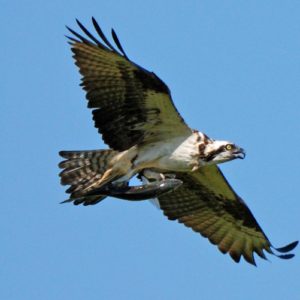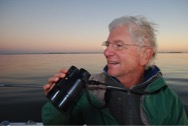
AREAWIDE — The Connecticut Audubon Society’s Roger Tory Peterson Estuary Center is offering a new program of Saturday morning field trips to natural areas along the lower Connecticut River starting May 6.
Estuary Explorations will be led by PhD ecologist Paul Spitzer, a protégé of internationally recognized naturalist and painter, Roger Tory Peterson. Each exploration will run from 9 a.m. to 1 p.m., with the possibility of extending the field tripinto the afternoon, depending on the participants’ interest.
The fee for each field trip is $30 per person ($25 per student) and registration is required. To register, visit this link.
Estuary Explorations will give participants a chance to learn about the Lower Connecticut River Estuary’s ecosystems and wildlife as the year progresses from the peak bird migratory season of May, through high summer, and into the late fall.

Spitzer has designed the programs to follow in the footsteps of one of the 20th century’s most famous naturalists, field guide author and illustrator Roger Tory Peterson, who spent his adult life painting in his studio in Old Lyme and examining the flora and fauna of the Connecticut River Estuary and the world.
Spitzer will showcase some of Peterson’s favorite natural sites and share his extensive knowledge of the ecology of the region. Spitzer plans to lead these explorations at a “Thoreauvian saunter,” moving slowly to appreciate many of the birds, plants, and insects that Peterson once enjoyed.
While Old Lyme tends to be recognized for its scenic views and historic artist colony and arts culture, it is also situated at an important ecological hub in New England — the meeting of the waters. In this species-rich estuary, the fresh water of the vast Connecticut River and Long Island Sound mix, resulting in a wealth of natural life.
Spitzer learned his natural history while growing up in the Connecticut River Valley. He is a graduate of Old Lyme High School and continued up the river to attend Wesleyan University. He later earned his PhD in ecological sciences from Cornell University.
More recently, he has studied the now substantial Connecticut River Estuary Osprey colony as a “biomonitor” of migratory menhaden abundance, the Osprey’s preferred food source. Spitzer advocates for sustainable management practices of this keystone fish for its ecosystem, economic, and societal functions.
Working alongside Spitzer will be Old Saybrook native, Jim Arrigoni. Arrigoni has worked as a fisheries biologist in Washington State and developed protocols to evaluate stream water quality in Hong Kong. Most recently, he has taught cultural and aquatic ecology classes at Goodwin College, and he is currently completing a PhD on the conservation value of restored wetlands.
Spitzer has studied Ospreys for 50 years, his research beginning here in the Connecticut River Estuary. By the 1970’s, the impact of DDT in the ecosystem whittled the local Osprey colony down to one active nest. Spitzer was instrumental in the recovery of this important keystone species to these waters.
“The Connecticut River Ospreys are our iconic story of revival from the brink,” said Spitzer. “These guided and educational field trips will open a world of discovery about nature’s profusion in this extraordinary bioregion.”
“Migrant and resident species of the estuary watershed are particularly exciting to observe in May. I will provide up-close and expansive views of the natural world from salt marshes to Yellow Warblers in particularly beautiful places.”
After meeting at the Old Lyme I-95 Park and Ride (Exit 70), participants will enjoy three hours of ecological exploration followed by a brown bag lunch and guided discussion in the field. Spitzer is also willing to offer optional afternoon sessions gauged by the stamina and interest of the participants.
Beyond the four Saturdays in May, the field trips will occur monthly through November.